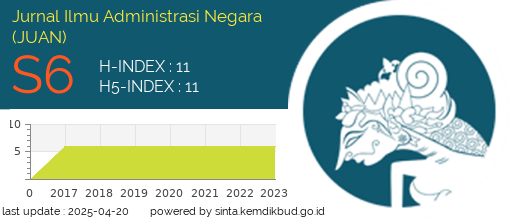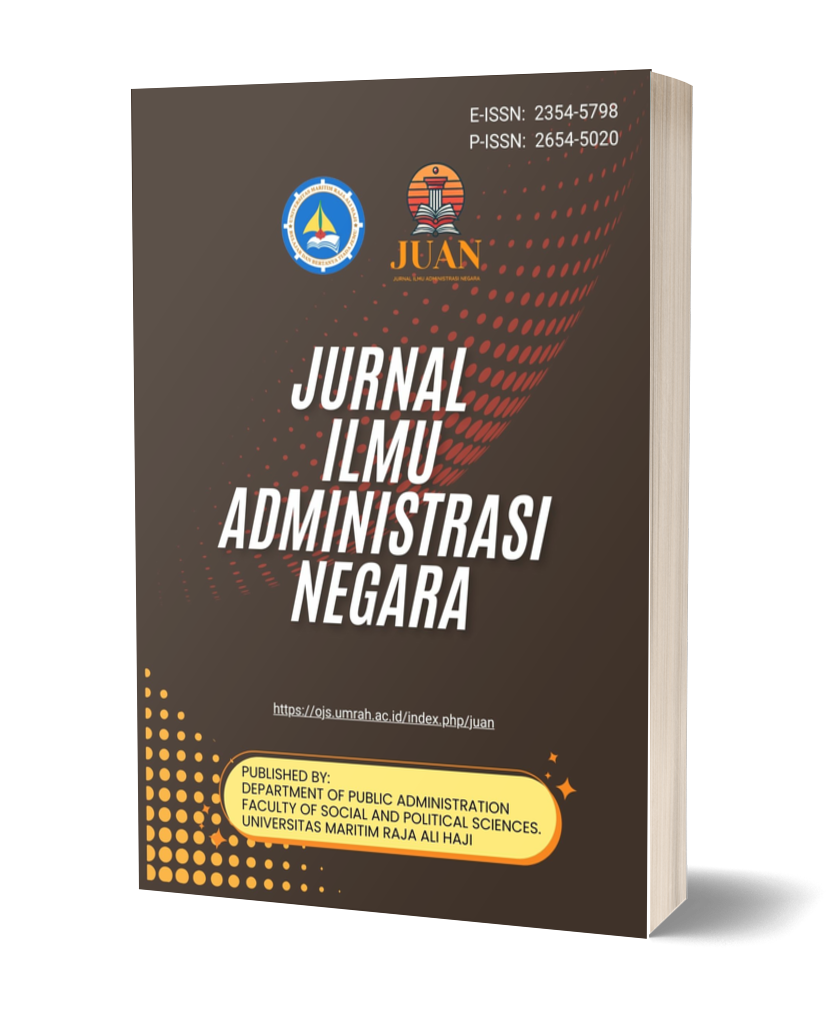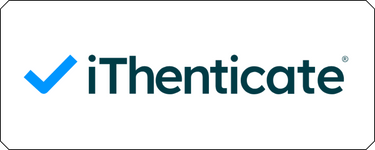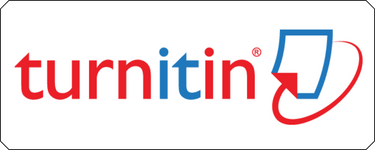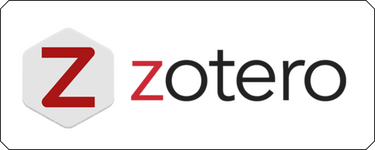ANALISIS BEBAN KERJA PEGAWAI PADA KANTOR PELAYANAN PERBENDAHARAAN PONTIANAK
DOI:
https://doi.org/10.31629/juan.v10i02.4708Keywords:
Workload, Working Time, Working HoursAbstract
This study aims to determine Employee Workload at the Pontianak State Treasury Service Office and the impact of workload on employees and the solutions that can be provided. The researcher’s initial observations indicate that there is an excessive workload at the Pontianak Treasury Service Office can cause a decrease in employee word performance. The researcher uses descriptive quantitative methods with descriptive statistics. Data collection techniques were carried out through interviews, observation, and documentation studies. The researcher chooses the conversion staff, validator, and reviewers. The results of the analysis of the workload of employees in the Fund Disbursement Section, it is considered to exceed the specified workload. This can be seen from the results of the workload analysis calculation using the task-by-task position approach method, obtained the workload for the Conversion Executing Staff is 266,960 minutes, the Validator Implementing Staff is 277,772 minutes, and the Reviewer Implementing Staff is 292,232 minutes. The total volume of workload exceeds the effective working time in one year, which is 89,770 minutes. Excessive workload makes employees have to use time out of working hours. Suggestions need to be balanced with rewards in the form of compensation, a better transfer/promotion system, and the provision of facilities and rewards. This is in line with Bambang Agus Diana and Ridho Hartas’s research entitled Employee Workload Analysis at the UPBJJ Office-Universitas Open Bandung with the results of the uneven distribution of employee workload causing employee performance to decline.
Downloads
References
Baik, J. J., Kang, Y. S., Kim, J. J., Nandasari, resitha mei, Baker, J., Walker, H. L., Cai, X., Kim, J. J., Baik, J. J., Kim, J. J., Fernando, H. J. S., & Blocken, B. (2004). ANALISIS BEBAN KERJA MENGGUNAKAN METODE NASA-TLX DAN BERDASARKAN KEPMENPAN NO.75 TAHUN 2004 PADA KARYAWAN KEUANGAN FAKULTAS TEKNIK UNIVERSITAS DIPONEGORO SEMARANG Budiman. Atmospheric Environment, 38(5), 3395–3404. http://dx.doi.org/10.1016/j.buildenv.2015.02.015
Bungin, Burhan. Metode Penelitian Kuantitatif: Komunikasi, Ekonomi, dan kebijakan Publik serta Ilmu-ilmu sosial lainnya, Jakarta: Kencana, 2009.
Diana, Bambang Agus., Harta, Ridho. 2017. Analisis Beban Kerja Pegawai Pada Kantor UPBJJ-Universitas Terbuka Bandung. Jurnal Manajemen dan Pelayanan Publik UNPAD.
KBBI (2016). Kamus Besar Bahasa Indonesia (KBBI) edisi 5. [Online] Available at : http://kbbi.web.id/.
Koesomowidjojo, Suci R. Mari’ah., 2017., Analisis Beban Kerja, Jakarta: Raih Asa.
Marihot, Y., Sari, S., & Endang, A. (2022). Buku Metode Penelitian Kualitatif & Kuantitatif. In Jurnal Multidisiplin Madani (MUDIMA) (Vol. 1, Issue 1).
Murdiyanto, E. (2020). Metode Penelitian Kualitatif (Teori dan Aplikasi disertai Contoh Proposal). In Lembaga Penelitian dan Pengabdian Pada Masyarakat UPN ”Veteran” Yogyakarta Press (I). Lembaga Penelitian dan Pengabdian Pada Masyarakat UPN ”Veteran” Yogyakarta. http://www.academia.edu/download/35360663/METODE_PENELITIAN_KUALITAIF.docx
Muchransyah, Muhamad., Rahmawati, Siti. 2016. Analisis Beban Kerja dan Kebutuhan Pegawai di Pusat Perpustakaan dan Penyebaran Teknologi Pertanian (PUSTAKA). Jurnal Manajemen dan Organisasi.
Nurhidayat, Budiman., Purwanggono, Bambang., dan Arvianto, Ary. 2016. Analisis Beban Kerja Menggunakan Metode Nasa-Tlx Dan Berdasarkan Kepmenpan No.75 Tahun 2004 Pada Karyawan Keuangan Fakultas Teknik Universitas Diponegoro Semarang. Industrial Engineering Online Journal
Paramita, Ratna, D. (2021). Metode Penelitian Kuantitatif (ketiga). Widya Gama Press.
Peraturan Menteri Pendayagunaan Aparatur Negara dan Reformasi Birokrasi Republik Indonesia Nomor 1 Tahun 2020 Tentang Pedoman Analisis Jabatan dan Analisis Beban Kerja.
Peraturan Menteri Keuangan No. 262/PMK.01/2016 Tentang Organisasi dan Tata Kerja Instansi Vertikal Direktorat Jenderal Perbendaharaan.
Peraturan Menteri Keuangan Republik Indonesia Nomor 169/PMK.01/2012 tentang Organisasi dan Tata Kerja Instansi Vertikal Direktorat Jenderal Perbendaharaan.
Rochima Dila, Zukarnaini. 2020. Analisis Beban Kerja Pegawai Pada Bagian Pemerintahan Kantor Camat Tampan Kota Pekanbaru. Jurnal Online Mahasiswa Fakultas Ilmu Sosial dan Ilmu Politik Universitas Riau.
Sugiyono. 2016. Metode Penelitian Kuantitatif, Kualitatif, dan R&D. Bandung; Alfabeta, CBaik, J. J., Kang, Y. S., Kim, J. J., Nandasari, resitha mei, Baker, J., Walker, H. L., Cai, X., Kim, J. J., Baik, J. J., Kim, J. J., Fernando, H. J. S., & Blocken, B. (2004). ANALISIS BEBAN KERJA MENGGUNAKAN METODE NASA-TLX DAN BERDASARKAN KEPMENPAN NO.75 TAHUN 2004 PADA KARYAWAN KEUANGAN FAKULTAS TEKNIK UNIVERSITAS DIPONEGORO SEMARANG Budiman. Atmospheric Environment, 38(5), 3395–3404. http://dx.doi.org/10.1016/j.buildenv.2015.02.015
Dilla, R. (2020). Analisis Beban Kerja Pegawai Pada Bagian Pemerintahan Kantor Camat Tampan Kota Pekanbaru. Jom Fisip, 7, 1–10.
Marihot, Y., Sari, S., & Endang, A. (2022). Buku Metode Penelitian Kualitatif & Kuantitatif. In Jurnal Multidisiplin Madani (MUDIMA) (Vol. 1, Issue 1).
Murdiyanto, E. (2020). Metode Penelitian Kualitatif (Teori dan Aplikasi disertai Contoh Proposal). In Lembaga Penelitian dan Pengabdian Pada Masyarakat UPN ”Veteran” Yogyakarta Press (I). Lembaga Penelitian dan Pengabdian Pada Masyarakat UPN ”Veteran” Yogyakarta. http://www.academia.edu/download/35360663/METODE_PENELITIAN_KUALITAIF.docx
Paramita, Ratna, D. (2021). Metode Penelitian Kuantitatif (ketiga). Widya Gama Press.
Wahdaniah, & Gunardi, A. (2018). Pengaruh Beban Kerja dan Stress Kerja Terhadap Kinerja Pegawai Pada Dinas Pekerjaan Umum Kabupaten Majene. Management Development and Applied Research Journal, 1(1), 51–65.
Downloads
Published
Issue
Section
License
You are free to:
- Share — copy and redistribute the material in any medium or format for any purpose, even commercially.
- Adapt — remix, transform, and build upon the material for any purpose, even commercially.
- The licensor cannot revoke these freedoms as long as you follow the license terms.
Under the following terms:
- Attribution — You must give appropriate credit, provide a link to the license, and indicate if changes were made . You may do so in any reasonable manner, but not in any way that suggests the licensor endorses you or your use.
- ShareAlike — If you remix, transform, or build upon the material, you must distribute your contributions under the same license as the original.
- No additional restrictions — You may not apply legal terms or technological measures that legally restrict others from doing anything the license permits.


